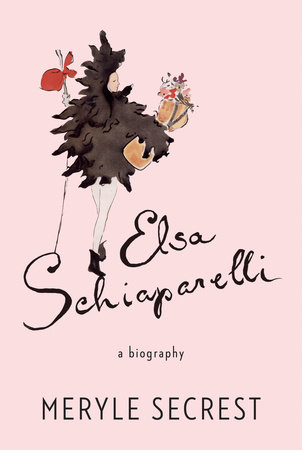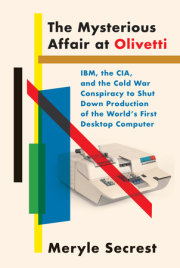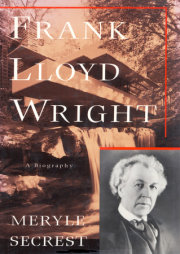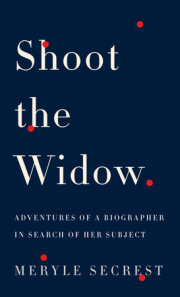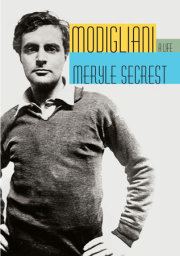The most extraordinary fashion designer of the twentieth century is now just a name on a perfume bottle. She is Elsa Schiaparelli, like Gabrielle Chanel a successful woman in the hierarchy of male Paris couturiers. But she was much more than a dress designer. Schiaparelli was an integral part of the whole artistic movement of the times. Her groundbreaking collaborations with such artists as Kees van Dongen, Salvador Dalí, Christian Bérard, Jean Cocteau, Alberto Giacometti, and Man Ray took the field of women’s wear from a business into an art form.
In the years between World Wars I and II, Schiaparelli, like Chanel, created clothes that were attuned to new freedoms for women and the reality of the role they were playing in the workplace. Skirts left the ankle and stayed close to the knee. Crippling corsets disappeared. Silhouettes were practical and wearable; fabrics could be washed. She was as much inventor as designer of style. Realizing that putting on a dress over the head could be a nuisance, she came up with a dress that could be wrapped around the body, an idea that is still with us. Split skirts were practical; she would show them even though it took decades for the idea of wide-legged pants to be socially acceptable, and even longer for the pantsuit. She patented swimsuits with built-in bras and went on to design similar shortcuts for dresses. The zipper arrived and she used it with panache. The Depression arrived, and along with it the idea of clothes that had a multiplicity of uses, such as reversible coats, the all-purpose dress with sets of accessories, skirts that came apart to make capes or shrugs that could be zipped onto evening gowns, and, during World War II, pockets that looked like purses and vice versa. Some of the most obvious things, like matching jackets for dinner dresses, had eluded everyone until she thought of them, and the idea of adding feathers to an outfit was exploited by Hollywood for years.
Had Schiaparelli done only this, she would have secured a place in fashion history. But she did much more. It is fair to say that she took the underlying concepts of surrealism, its emphasis on the unconscious, the irrational and daring, and translated them into items of fashion. She made hats look like lamb cutlets, high-heeled shoes, or clown’s cones. Pockets were made to look like drawers, necklaces became collections of insect specimens, handbags were shaped like balloons, and buttons could be anything: lips, eyes, or carrots. The exquisite embroidery from Lesage adorned evening jackets that took their inspiration from musical instruments, vegetables, circus acrobats, or the solar system. Her clothes were smart, wearable, and sexy and marked the wearer as an individualist as well as someone with a sense of humor—the Duchess of Windsor, after all, chose a diaphanous evening gown for her honeymoon that featured a huge pink lobster on its skirt, surrounded by some tastefully sprinkled parsley.
Schiaparelli had a kind of instinct, not just for what American buyers liked—and despite her impeccable Parisian credentials, her biggest audiences were Americans. The styles she launched: for padded shoulders, split skirts, mesh chenille snoods, shirttail jackets, bowler hats, fur shoes, and her own vivid shade of pink, called “shocking”—were reproduced in the thousands. Then there were all her Shocking perfumes, each named with a word beginning with S. An astute businesswoman, she launched herself into hats, hose, soaps, shoes, handbags, and cosmetics in the space of a few years. By 1930, her company was grossing millions of francs a year. She had twenty-six workrooms and employed more than two thousand people.
Schiaparelli, like Dalí, wanted to shake people out of their torpor and make them look at themselves and the world afresh. She wanted to shock, and she did shock. Then World War II arrived, and she clung on. Her workrooms on the Place Vendôme continued to function, her perfume went on being sold, and her mansion on the Right Bank stayed intact, one of the facts that led, in the end, to deep suspicions from spy agencies from Berlin and London to New York. She had shaken off the baleful influence of a self-destructive husband and fought to give their only child, Gogo, a better life after she was stricken with infantile paralysis. She had battled everything and survived, but the one thing she could not conquer was changing tastes. Women no longer wanted to be self-assertive and different, as Dior discovered in 1947 when he launched his New Look. They wanted full skirts, tight waists, a bosom, a very large hat, and high heels. Schiaparelli had lost her most vital source of inspiration—surrealism—and the impulse went with it. Her postwar clothes lack the inner conviction that had inspired them, and her sales dwindled away. The triumphant return of Chanel—her clothes, for all their practicality, were always ladylike—coincided almost to the day with the moment when Schiaparelli closed her doors. She was finished.
In the decades that followed, along with the arrival of T‑shirts, blue jeans, sneakers, and baseball caps, the idea of a distinctive look has, for most women, disappeared. What most women want is not to look different, as a wry cartoon in The New Yorker recently made clear. That may be true, but the allure of a beautifully made, exquisitely imagined look has not completely disappeared either, if the popularity of several recent exhibitions of haute couture is any guide. Such examples transcend mere fashion, because they speak to a deep human need. They have become works of art in themselves.
This, then, is the legacy of Schiaparelli.
Excerpted from
Elsa Schiaparelli by Meryle Secrest Copyright © 2014 by Meryle Secrest. Excerpted by permission of Knopf, a division of Random House LLC. All rights reserved. No part of this excerpt may be reproduced or reprinted without permission in writing from the publisher.
Copyright © 2014 by Meryle Secrest. All rights reserved. No part of this excerpt may be reproduced or reprinted without permission in writing from the publisher.

